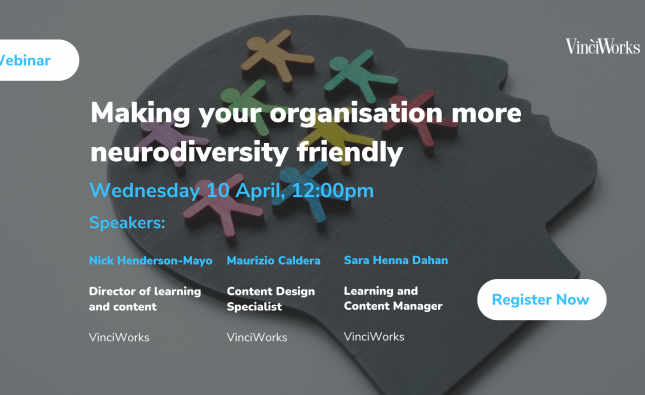
What is intersectionality?
We are all multi-dimensional in our identities. Someone may be both a woman of colour and a lesbian, for example, or an older man from an economically deprived background may also have a disability. Both of them may well have a faith, and they may also be parents or carers. Few of us see our identity in terms of one sole defining characteristic, but initiatives around inclusion have often tended to take precisely that approach, failing to appreciate the complex interplay between the different characteristics and experiences that make us who we are.
How does intersectionality approach inequality?
Intersectionality proposes that characteristics such as our gender, our race, our age, our sexuality or our social background ‘intersect’ to create a unique set of experiences. While certain intersections may create an advantage or give us a degree of privilege, others can result in multiple and intersecting forms of bias, discrimination and disadvantage, which in turn can affect everything from our educational attainment, working lives and health outcomes to our access to economic and social resources.
The concept of intersectionality was developed by American civil rights advocate Kimberlé Crenshaw as a result of witnessing the compounded discrimination experienced by black women in the workplace, who were impacted simultaneously by sexism and by racism. Crenshaw argued that by treating black women as purely ‘women’ or as purely ‘black’, the complex challenges that black women faced as a group were being overlooked, and it was her expressed hope that intersectionality could be ‘a prism to bring to light dynamics within discrimination law that weren’t being appreciated by the courts’:
“Courts seemed to think that race discrimination was what happened to all black people across gender and sex discrimination was what happened to all women, and if that is your framework, of course, what happens to black women and other women of colour is going to be difficult to see.”
Kimberlé Crenshaw, Civil Rights Activist and Professor, UCLA Law School and Columbia Law School
Having first laid out her theory of intersectionality in 1989 in a paper in the University of Chicago Legal Forum entitled “Demarginalizing the Intersection of Race and Sex” , Crenshaw’s concept soon entered mainstream thinking, appearing in the Oxford English Dictionary in 2015 and rapidly gaining traction in diversity and inclusion discourse. But alongside its many champions, it’s a theory that has also attracted significant controversy and one that has been subject to repeated misinterpretation and misrepresentation. Chief among these have been the claims that it creates a ‘hierarchy of victimhood’ by encouraging people to identify with as many marginalised groups as possible, or that it is fundamentally divisive and supports an obsession with historic injustice that does little to address present-day inequality. But is intersectionality really about creating some kind of ‘oppression quotient’ or guilt-tripping people into a frenzy of privilege-checking?
The benefits of an intersectional approach
Diversity and inclusion experts say quite the opposite, pointing out that intersectionality in fact gives us a lens through which to re-evaluate prejudice and power imbalances and understand the complexity of disadvantage, bias and prejudice that people can experience – enabling us to take more informed, appropriate and targeted action to address any resulting inequality or discrimination.
Intersectionality also supports a broader and more holistic view of inclusion that avoids addressing one form of discrimination at the expense of another, such as prioritising gender pay equality over race pay equality. Crucially, too, as a precision instrument in the inclusion toolbox it helps us to gain a better understanding of the experiences of ‘minorities within minorities’, such as ethnic minority members of the LGBTQ+ community, who may experience not just homophobia and transphobia within their ethnic or religious communities, but racism within LGBTQ+ spaces as well.
Gathering intersectional data
“It’s really important that organisations collect meaningful data to understand the challenges around intersectionality. And that’s because we can’t start to tackle a problem if we can’t see it, and data helps to make some of these challenges more visible.”
Dr Ashley Williams, Psychologist, Pearn Kandola LLP
Gathering quantitative and qualitative data through surveys, interviews, pay gap analyses and other methods is key to providing a picture of people’s specific needs and experiences and identifying where problems lie. But before we can start gathering data, we need to make people feel comfortable about sharing it in the first place, and this involves building trust and creating an environment of transparency and psychological safety where people feel safe to engage with the process.
“I would happily give organisations my protected data if I felt valued, if I felt appreciated, if I felt seen, if I was able to bring my whole self to work …. However, if I’m walking into an organisation and the emphasis is on ‘give us your data’ but the behaviours are also quite negative, it’s a very hostile working environment, it’s an environment with lots of microaggressions and there is no inclusion – I would not trust that by giving you my data you are going to do something valuable with it.’
Mabinty Esho, Senior Equality, Diversity and Inclusion Manager, Comic Relief
Having gathered the data, the next step is knowing how to interpret it. This involves not only undertaking an intersectional analysis but also looking at the wider context, including both historic and contemporary structures of inequality, and considering where policies and initiatives in one area might be impacting on or undermining efforts elsewhere. This then puts us in a position where we can develop and implement solutions that address systemic change within an organisation as well as modifying individual behaviour.
How do we put intersectionality into practice?
From an employer perspective, what’s key is understanding how the complex interplay of identities plays out throughout the entire lifecycle of an employee, from their recruitment and onboarding and right through to when they leave. Look at your recruitment process – are you casting the net as wide as possible, or are you just appealing to people from the same educational and social backgrounds? Find out who’s leaving the organisation – how does your turnover rate of Black female employees compare to that of your White female employees, for example? Are there equal opportunities for advancement for people from different backgrounds, or are social background, race or gender a predictor of hierarchy?
Understanding how intersectional identities play out in terms of how people access your services or interact with your organisation can help to improve engagement with customers and service-users and unlock a host of business benefits. Could your organisation be struggling to engage with certain communities, for example, or failing to penetrate certain markets? As well as gathering and analysing the data, opening up lines of communication and providing opportunities for meaningful feedback will help to make these issues more visible and the challenges easier to address.
Taking an intersectional approach requires time and effort and a willingness not just to ask difficult questions, but to be prepared to listen to the answers. The good news is that once we start embedding intersectionality in everything that we do, the more informed and sustainable our actions and interventions will be and more likely we are to be able to achieve our goals. In the words of Kimberlé Crenshaw, “The better we understand how identities and power work together from one context to another, the less likely our movements for change are to fracture.”
Skill Boosters’ Intersectionality course
Skill Boosters just released a new film-based course on Intersectionality. The new course offers the following learning outcomes:
- Explains what is meant by the term ‘intersectionality’
- Teaches users how personal characteristics such as our race, class, sex or religion intersect with one another to form our unique identities
- Explains what we mean by ‘privilege’ and why it is intersectional
- Teaches learners to appreciate that there may be many different ‘voices’ within a marginalised or minority community
- Sets out the key benefits for organisations and employers of taking an intersectional approach
- Teaches users how to incorporate intersectionality into specific workplace practices and attitudes
About Skill Boosters
Skill Boosters believes passionately that success comes from everyone being able to take their whole and best self to work, not just sometimes, but every day. Their video-based training addresses meaningful workplace challenges in equality, diversity and inclusion, leadership and teamwork. Skill Boosters entire range of video-based courses and resources are available on a cost-effective annual subscription, based on the size of an organisation’s workforce.


